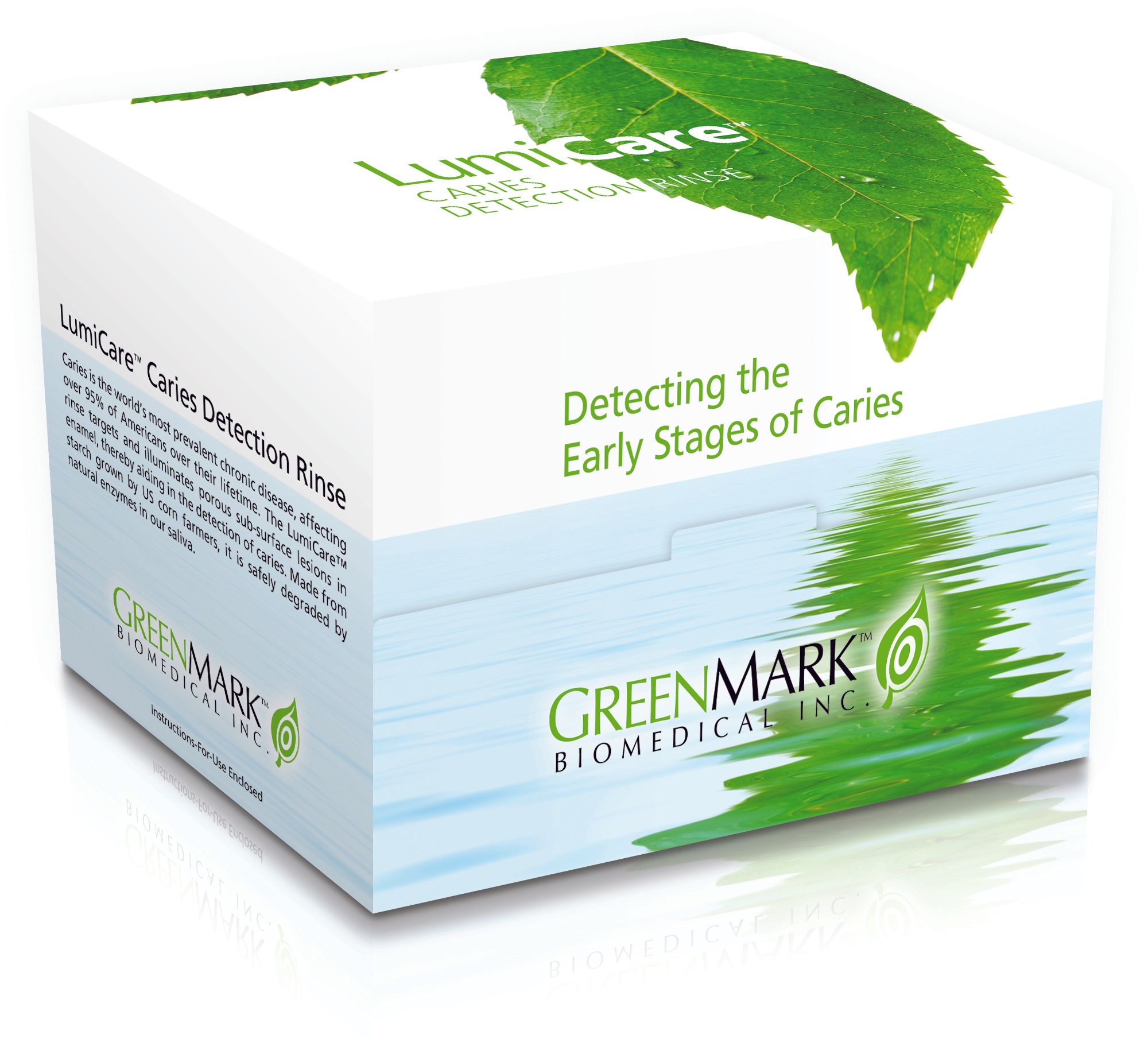5Ws* GreenMark Biomedical’s LumiCare™ Rinse
An introduction to this new caries detection rinse designed to enable early detection and treatment of dental caries that can be used via a simple protocol.

What: GreenMark Biomedical’s LumiCare™ Caries Detection Rinse
Who: GreenMark Biomedical – 517-896-3665 – greenmark.bio
Where: Practices looking for a simple solution to help dental professionals identify dental breakdown at its earliest stages and encourage patients to manage their disease process with preventive measures.
When: This aqueous LumiCare™ rinse is designed to enable oral healthcare professionals to preserve teeth through earlier disease detection and non-invasive treatment. With caries being the world’s most prevalent chronic disease, this solution can and should be used by all dental practices. The product is still waiting FDA 510(k) clearance for sales in the U.S.
Why: GreenMark is aiming to transform the dental experience by enabling dentists to accurately assess when to treat and make painless, natural repair possible. Small sub-micron starch particles are used to identify porous pre-cavities in the sub-surface of enamel at an early stage. The LumiCare™ rinse is to be used during routine dental exams, and illuminates otherwise undetectable cavities with a standard dental curing light, and an advanced treatment solution is under development. This is a much more natural way than the traditional surgical approach. Early caries diagnostics will transform your clinic and bring more patients to your offices for preventive and diagnostic care, driving clinic growth and prosperity while improving oral health outcomes.
*How: At the core of GreenMark’s dental technology is its proprietary starch nanoparticle. Starch nanoparticles are small sub-micron particles that form highly stable aqueous dispersions. By virtue of these starch nanoparticles, this technology platform can be applied to multiple applications within healthcare. These small particles are not solid as hard mineral-based nanoparticles, but they can be thought of as “nano-sponges”. When loaded up with minerals they can be targeted to the sub-surface to restore enamel. When tagged with a fluorescent dye they target and illuminate caries. Images of detected carious lesions are easy for both dental professionals and patients to understand. Upon successful non-invasive treatment lesions no longer illuminate
ACTIVA BioACTIVE Bulk Flow Marks Pulpdent’s First Major Product Release in 4 Years
December 12th 2024Next-generation bulk-fill dental restorative raises the standard of care for bulk-fill procedures by providing natural remineralization support, while also overcoming current bulk-fill limitations.